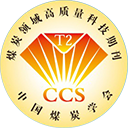Abstract:
To counter the the difficult and accurate calculation of gas loss content in the determination of coal-seam gas content with the direct desorption method, the gas loss content in the exposure process of coal samples was determined actually by the combination method of the gas adsorption tester and the gas desorption tester, and the comparative analysis was carried out on the calculation accuracy with both the geological compensation model and Sun Zhongxu compensation model. It was found in the study that the gas loss content was related to the exposure time and particle size for the same coal sample, the bigger the particle size of it, the less the gas loss content, and when its particle size was big to a certain degree, the gas loss content did not increased obviously. The comparison with the actually measured gas loss content of the coal samples showed that the compensation effect of gas loss content with Sun Zhongxu method was better than that with the geological method, the shorter the exposure time of the coal sample, the higher the calculation accuracy of the gas loss content. When the particle size of the coal sample was less than or equal to 20 mm, its exposure time should be less than 20 min; and when its particle size was bigger than 20 mm, its exposure time should be less than 30 min.



 下载:
下载: